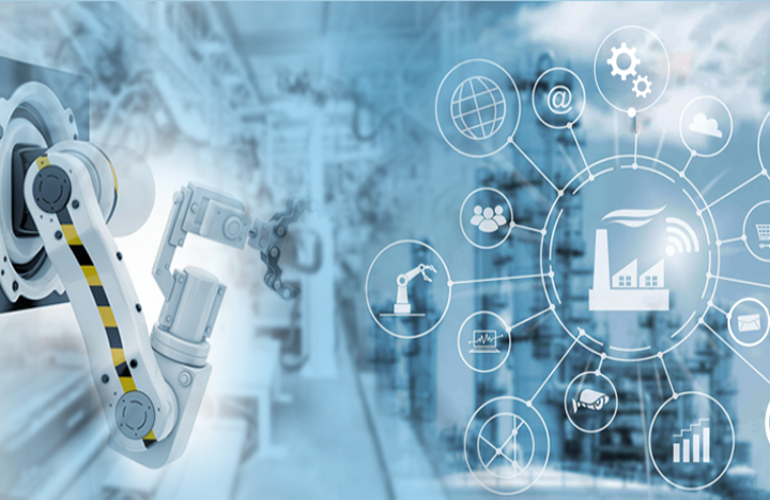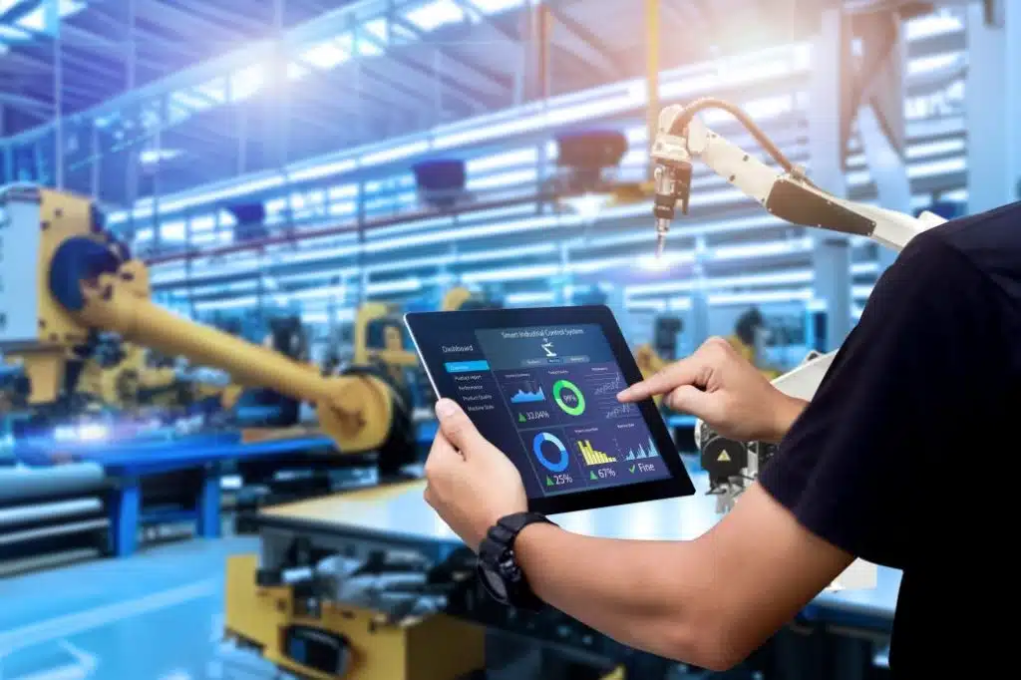
Business Intelligence for Manufacturing: How Data is Transforming the Factory Floor
Business Intelligence for Manufacturing: BI does not have to be an exclusive area for financial institutions and tech firms. Over the last few decades the significance of BI has grown exponentially and it is now an indispensable instrument for manufacturing. With the help of advanced tools and human knowledge, BI is empowering manufacturers to run their businesses with unparalleled visibility as well as agility and efficiency.
Understanding the significance in the role of BI in the manufacturing industry is vital for anyone working in the creation production, distribution and design of products. This comprehensive guide offers insights on the use to BI for manufacturing. It also outlines the most important elements of an effective BI system, and actual applications that demonstrate the potential of BI to transform business.
Business Intelligence for Manufacturing
Manufacturing can’t afford to ignore the BI

Production is in an important point, marked by explosive technological advances and the market. Staid production lines from the past are becoming intelligent factory of the next driven by an unstoppable thirst for data. To be successful and survive in the current climate, businesses have to be flexible and agile and adaptable, qualities that BI perfectly helps to support.
Manufacturing BI isn’t just about having data. it’s about gaining actionable insights from it. In doing this, BI empowers manufacturers to keep their fingers in the pulse of their business and detect market trends, improve supply chains, guarantee the quality of their products, and ultimately, boost their profitability.
Production Pillars The Pillars of Manufacturing
In order for BI to be effective within manufacturing it has to be built on three strong three pillars: data collection data analysis, and implementation. These three pillars ensure that BI systems are not just complete in their operation, but also able to be able to meet the ever-changing needs that modern production requires.
Data Collection: Establishing an Foundation
The foundation for every BI project is the data and in the manufacturing industry, data is derived from a variety of sources, including sensors equipment, machines, supply chains and much more. The first step is to identify the appropriate data to collect while ensuring its integrity and then bringing all of it into a unified system. This is the base on which the whole BI structure is built.
Data Analysis to extract Value
After data has been gathered then the real work starts. The powerful analytics tools can analyze the data, revealing patterns, outliers, as well as opportunities. from predictive maintenance through real-time improvements in process Data analysis is at the core of BI that breathes life into manufacturing processes with valuable insight that can be used for action.
Decision Implementation closing the Loop
The best insights all over the world are useless in the absence of action on. The final aspect in BI within manufacturing concerns the execution of actions based on analysis. This usually involves automating certain processes, establishing new workflows, or distributing important shifts within the company.
Resolving the challenges to BI Adoption within Manufacturing

Despite its benefits but implementing a strong BI system for manufacturing can be a difficult job. Cultural resistance, data silos as well as technological barriers could all hinder the use of BI. By becoming aware of these issues and confronting them face-to-face, businesses are able to successfully incorporate BI into their business processes.
Unifying Data from Silos
Manufacturers frequently face the issue of siloed information, in which data is confined to specific departments or within specific systems. BI implementation involves the breaking down of these silos as well as creating an environment that promotes openness across the entire organization.
Building a Culture of Data-Driven Behavior
BI fundamentally alters how decision-making is taken. It is a requirement for organizations to be more data-driven. This can be a significant shift in culture. The leadership must be a champion of this shift and create a culture in which the importance of data and used at all levels.
Technology Barriers and Integration
The speed of technological innovation can make it difficult for companies to choose the best tools for business intelligence. Integration with the existing systems is an intricate task that requires meticulous plan and execution.
Utilizing the full potential of BI Use Cases in Manufacturing
The power behind BI will be best appreciated through its concrete applications. In the manufacturing industry, BI is the Swiss Army knife of data-driven decision making, and it has applications in almost every aspect of business. Below are some examples which illustrate how BI can change the game in the manufacturing industry.
Supply Chain Optimization
A well-organized supply chain management system is a key element of a successful manufacturing business. BI can aid by providing insight into the performance of suppliers as well as inventory levels and forecasting demand. It can also facilitate flexible supply chain adjustments like rerouting materials to avoid delays or enhancing inventory levels to meet production schedules.
Improvement in Quality Control
The quality of the product is an absolute requirement in the manufacturing process. Tools for BI analyse production data in real-time, identifying any anomalies or potential defects. They also offer historical data to determine the root cause of quality issues, resulting in rapid resolution and improvement in process.
Predictive Maintenance
Unplanned downtime is an enormous cost to manufacturing resources. The predictive maintenance capabilities offered by BI utilize machine learning to determine the likelihood of equipment to fail, which allows for scheduled maintenance that is not disruptive to production. The shift from proactive to reactive maintenance will help save time, money and headaches.
Performance Monitoring
Dashboards for BI provide current and historical data on the performance metrics on production lines. Managers can keep track of the most important indicator of performance (KPIs) like OEE (Overall Efficiency of Equipment) to pinpoint areas for improvement and implement timely changes to processes in the hope of increasing efficiency.
Process Innovation
Analytics of data within BI could reveal new possibilities to improve processes which could include switching to cost-effective materials, changing the layout of the assembly lines to allow for more efficient flow, or even inventing entirely new manufacturing methods completely. This keeps manufacturers on the forefront of their field.
Best Practices to embark on a BI Journey Manufacturing

Get started with a clear plan and goals that are strategic for what BI will accomplish in your factory setting. Take note of the following guidelines when setting up an BI system:
Aligning Business Objectives with BI
In order for BI to be effective It must be in line with the overall strategic goals of the manufacturing industry. This will ensure that the analysis of data directly contributes to the company’s high-level objectives, like improvement, efficiency or innovation.
Choosing the Right Tools and Technologies
The best BI tools and techniques can determine the success or failure of an industrial BI initiative. It is crucial to choose tools that satisfy the needs of the business, but also are scalable enough to scale with company’s needs and able to adapt to the changes in technology.
Empowering and Training Employees
BI isn’t just about technology. It’s about people. Employees should be taught to use tools for BI efficiently and effectively. In addition, they should be empowered to take decisions based upon the data BI can provide, even when it isn’t in line with the norm.
Continuous Improvement
BI does not have to be a single initiative, but rather a continuous process of continual improvement. Manufacturers must regularly evaluate and improve the BI methods to make sure they remain relevant and adapt to the ever-changing requirements of the market.
Evaluation of ROI and the success
It is crucial to determine your return-on-investment (ROI) of an system for BI. This evaluation provides valuable information on the effectiveness of the system and will help you make informed decisions on the best way to enhance and expand BI capabilities.
It’s the Future of Manufacturing with BI
Future manufacturing using BI is constantly driven by data. As technology improves and more manufacturing companies embrace BI and BI, we are likely to see more advancements and a greater efficiency across the entire industry. The future factory is highly responsive, intelligent and adaptable which is why BI will be the engine that pushes it forward.
No matter if you’re managing a tiny shop or a multi-national enterprise, adopting BI into manufacturing is crucial to long-term success. The potential of BI to improve efficiency as well as reduce costs and boost the development of new products is too crucial to overlook. Through understanding the purpose of BI and overcoming the challenges to adoption and using the best practices, businesses are able to unlock the value of the most important asset they have, data.
In the end, business intelligence for manufacturing is not just a tool. It’s an approach that puts data at the helm of business decision-making. As the world of manufacturing changes and evolve, those who leverage the potential that comes from BI will be in the best position to lead the way.
Conclusion
When it comes to wrapping up the importance in the field of Business Intelligence for Manufacturing is not to be underestimated. These systems transform raw information into actionable data and drive gains in efficiency, quality and innovation. Companies that integrate BI into their processes gain competitive advantage by allowing the use of data to make decisions, which is crucial in a constantly changing industrial landscape. Business intelligence isn’t just about adopting new software, it’s about cultivating an environment that promotes information and continual advancement, which will ensure a long-lasting and long-lasting future for the business.
Commonly asked questions (FAQs) Business Intelligence for Manufacturing
What are the primary advantages of business intelligence to manufacturing?
The most significant benefits are improved efficiency in operations, improved control over quality Supply chain optimization, proactive maintenance and capacity to create new methods.
How can business intelligence help improve manufacturing decision-making?
Tools for BI analyze huge volumes of data to discover trends, performance indicators and data that help make strategic decisions. They also help better align business objectives with operations more efficiently.
Are small and medium-sized businesses able to gain by business analytics?
Yes they are, BI solutions can be adaptable and can be tailored to the specific size and requirements of any manufacturing company regardless of its size. They can also be used to boost efficiency and improve decision-making.
What are the challenges that manufacturers might face when they implement BI solutions?
Manufacturers could face difficulties like data integration in integrating Business goals to BI choosing the right tools, providing training to employees and tracking ROI.
What role can the training of employees play into ensuring successful BI adoption?
A proper training program helps employees use the tools of BI to their full potential, which will maximize the value of technology for the production process.



